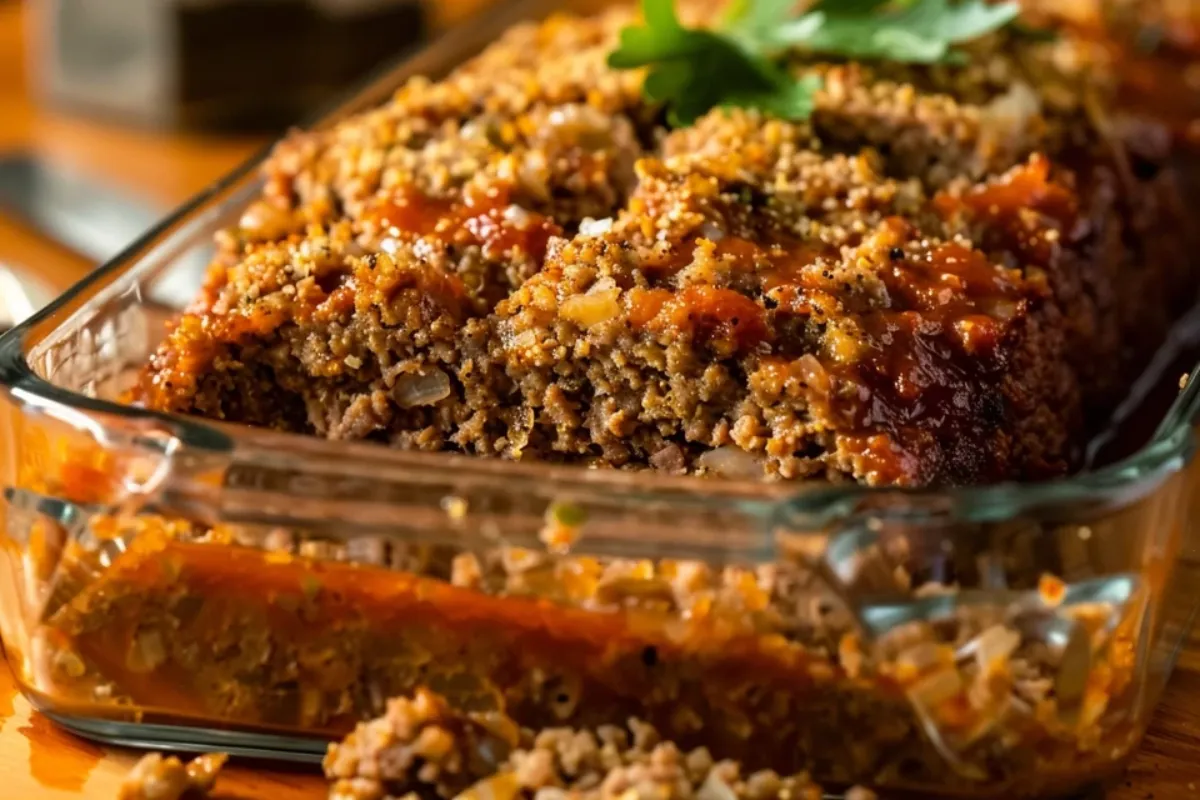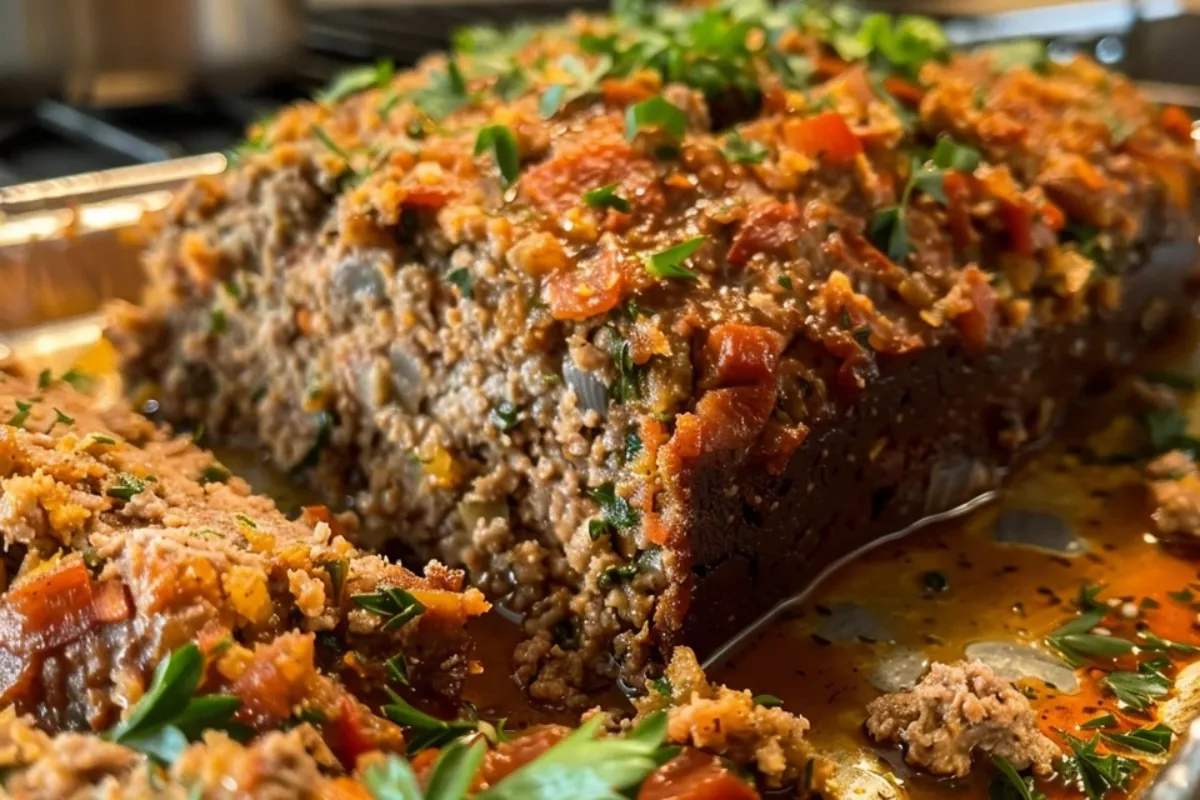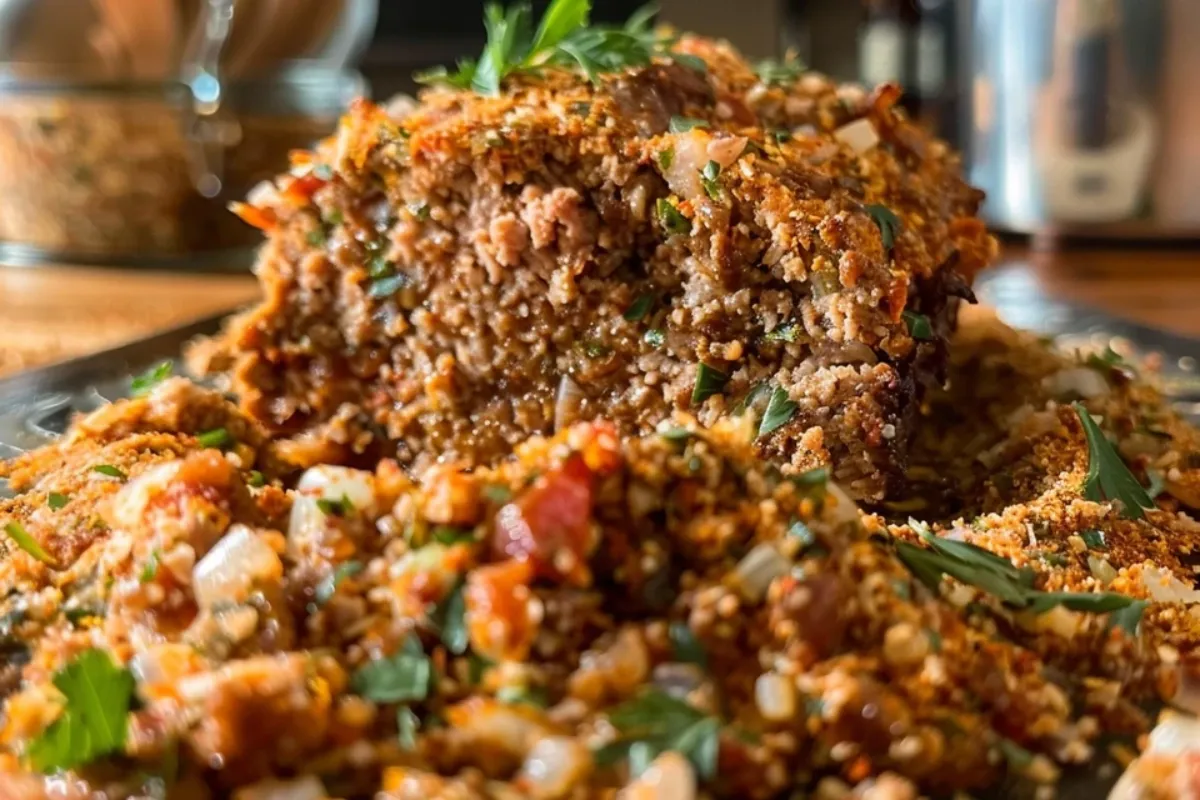Meatloaf seasoning is what makes a meatloaf tasty and full of flavor. With the right mix of spices and herbs, you can turn a simple dish into a family favorite. This guide explains how to make the best seasoning for your meatloaf.
Introduction
Meatloaf seasoning is a mix of herbs and spices that add flavor to ground meat. A good seasoning makes your meatloaf delicious and special. This article covers how to make a perfect seasoning blend and tips to use it.
1. What is Meatloaf Seasoning?
Meatloaf seasoning is a mix of common spices and herbs like garlic powder, onion powder, paprika, and dried parsley. Each ingredient adds its own flavor, making your meatloaf taste better.
2. Key Ingredients in Meatloaf Seasoning
- Spices:
- Garlic Powder: Mild garlic taste.
- Onion Powder: Sweet and savory.
- Paprika: Adds color and a slight smoky flavor.
- Herbs:
- Dried Parsley: Light and fresh.
- Dried Thyme: Earthy flavor.
- Dried Basil: Slightly sweet.
- Other Ingredients:
- Salt and Pepper: Basic flavors.
- Brown Sugar: Adds sweetness.
- Ground Mustard: A little tangy kick.
3. Simple Meatloaf Seasoning Recipe
Mix these ingredients:
- 2 tsp paprika
- 1 tsp garlic powder
- 1 tsp onion powder
- 1 tsp dried basil
- 1 tsp ground mustard
- ½ tsp salt
- ¼ tsp dried thyme
Store the mix in an airtight jar for up to six months. Use about 3 tablespoons per two pounds of ground meat.
4. Tips for Making Meatloaf
- Mix Evenly: Spread the seasoning evenly with breadcrumbs and eggs before adding the meat.
- Keep it Juicy: Add milk or broth for moisture.
- Don’t Overmix: Mix gently to avoid a tough texture.
5. Flavor Variations
- Italian Style: Add oregano, rosemary, and thyme.
- Spicy Cajun: Use cayenne pepper and chili powder for a kick.
- Herb-Infused: Add more parsley and thyme for a fresh taste.
6. Storage and Usage
- Keep the seasoning in a cool, dry place.
- Use it within six months for the best flavor.
- Adjust the amount based on your taste.
7. Enhancing Meatloaf
- Add Vegetables: Chopped onions or bell peppers boost flavor.
- Try a Glaze: Mix ketchup, brown sugar, and mustard for a sweet topping.
- Serve with Sides: Mashed potatoes or roasted veggies pair well.
8. Avoid These Mistakes
- Too Much Spice: Keep the flavors balanced.
- Not Enough Seasoning: Don’t be afraid to use enough.
- Skipping Moisture: Always add wet ingredients for a juicy meatloaf.
9. Healthier Options
- Low-Sodium Version: Use less salt or a salt substitute.
- Natural Ingredients: Choose fresh herbs and spices without additives.
10. Meatloaf Seasoning for Other Dishes
Meatloaf seasoning can be used for more than just meatloaf. Try it in these dishes:
- Burgers: Add 1–2 teaspoons of seasoning per pound of ground meat for flavorful burgers.
- Meatballs: Use the seasoning in your meatballs for an extra tasty touch.
- Casseroles: Sprinkle some seasoning in beef or chicken casseroles to boost flavor.
11. Making Meatloaf More Exciting
You can make your meatloaf more special with these ideas:
- Cheese Topping: Add cheddar, parmesan, or mozzarella on top for extra flavor.
- Different Glazes: Use BBQ sauce, honey mustard, or spicy tomato sauce for a twist.
- Stuffing Ideas: Add cooked vegetables, cheese, or boiled eggs inside the meatloaf for a surprise.
12. Simple Tips for Cooking Meatloaf
- Cooking Time: Bake meatloaf at 350°F (175°C) for 50–60 minutes. Use a meat thermometer to check—160°F (71°C) for beef, 165°F (74°C) for poultry.
- Rest Before Cutting: Let the meatloaf sit for 5–10 minutes after baking so the juices stay inside.
- Avoid Dryness: Add eggs, milk, or grated vegetables like carrots to keep it moist.
13. Serving Ideas for Meatloaf
Pair your meatloaf with simple side dishes like:
- Mashed Potatoes: Creamy and soft, perfect with meatloaf.
- Green Beans: Sautéed with a little garlic for a fresh side.
- Buttered Corn: Quick, easy, and tasty.
You can also serve it with sauces like:
- Gravy: Rich and savory.
- Horseradish Sauce: Tangy with a bit of spice.
- Chimichurri: Fresh and zesty.
14. Why Homemade Seasoning is Better
Making your own seasoning has many benefits:
- Custom Flavor: You control the ingredients and flavors.
- Healthier: No preservatives or additives.
- Cheaper: Use what you already have in your kitchen.
15. Avoid These Common Mistakes
- Too Much of One Spice: Don’t let one spice take over the flavor. Use small amounts and balance the mix.
- No Salt: Even a little salt is important for bringing out the flavors.
- No Taste Test: Cook a small piece of the meatloaf mix first to check the seasoning before baking the whole thing.
16. Final Tips for Perfect Meatloaf
- Use Fresh Ingredients: Fresh herbs and spices give the best flavor.
- Store Properly: Keep your seasoning mix in an airtight container, away from light and heat.
- Try New Flavors: Experiment with different herbs and spices to create your favorite mix.
17. Add New Flavors to Your Meatloaf
You can make your meatloaf taste different by adding new flavors:
- Herb Flavor: Use rosemary, thyme, or sage for a fresh taste.
- Spicy Flavor: Add a little cayenne pepper or chili powder for heat.
- Sweet Flavor: Mix in a bit of honey or brown sugar for sweetness.
18. Make Your Meatloaf Juicy
To keep your meatloaf from drying out:
- Add Wet Ingredients: Use milk, broth, or eggs to make the mixture soft.
- Grated Vegetables: Add grated carrots, zucchini, or onions to keep it moist.
- Cover While Cooking: Cover the meatloaf with foil for the first half of cooking, then remove it for browning.
19. Simple Mistakes to Avoid
Here are common mistakes and how to fix them:
- Overmixing the Meat: Mix gently. Too much mixing makes the meatloaf tough.
- Not Enough Seasoning: Be sure to use enough seasoning to add flavor.
- Dry Meatloaf: Always balance wet and dry ingredients to keep it moist.
20. Best Side Dishes for Meatloaf
Serve meatloaf with easy and tasty sides:
- Mashed Potatoes: Soft and creamy, perfect for soaking up sauces.
- Roasted Vegetables: Simple to make and full of flavor.
- Steamed Rice: A plain side that goes well with seasoned meatloaf.
21. Easy Glaze Ideas
Top your meatloaf with a glaze to make it extra special:
- Classic Glaze: Mix ketchup, brown sugar, and a little mustard.
- BBQ Glaze: Use your favorite barbecue sauce for a smoky taste.
- Sweet Glaze: Combine honey and a splash of soy sauce for a sweet twist.
22. Why Homemade Seasoning is Best
When you make seasoning at home:
- You Choose the Ingredients: Add what you like and skip what you don’t.
- No Chemicals: Store-bought mixes often have extra preservatives.
- Saves Money: Using spices you already have is cheaper.
23. How to Store Meatloaf Seasoning
To keep your seasoning fresh:
- Use an Airtight Jar: This keeps out air and moisture.
- Keep in a Cool Place: Store it in a cupboard away from sunlight.
- Label the Jar: Write the date you made it, so you know how fresh it is.
24. Try Your Seasoning in Other Recipes
You can use meatloaf seasoning in:
- Burgers: Add it to ground meat for flavorful patties.
- Casseroles: Sprinkle it over baked dishes for extra taste.
- Vegetables: Toss roasted veggies in the seasoning for added flavor.



2 thoughts on “Meatloaf Seasoning: The Ultimate Guide”